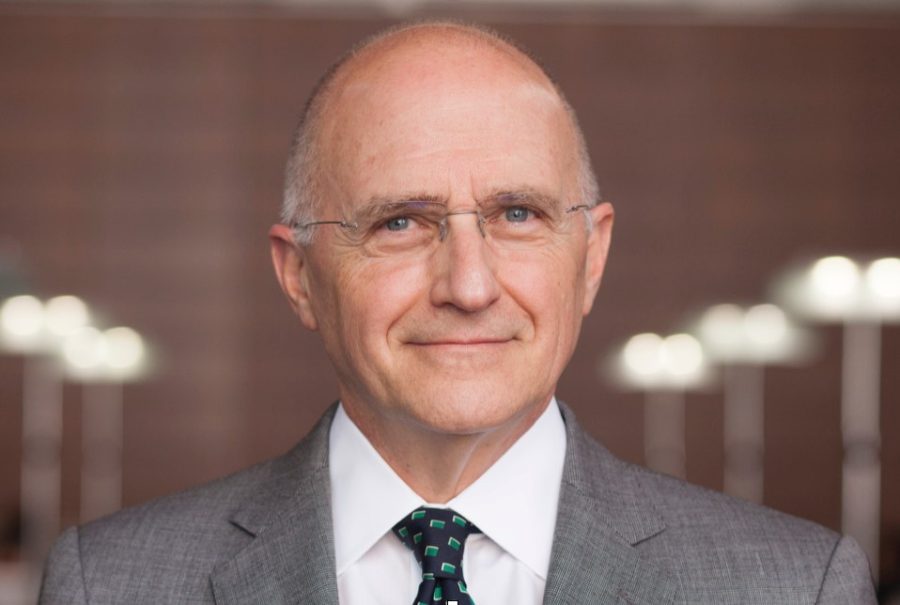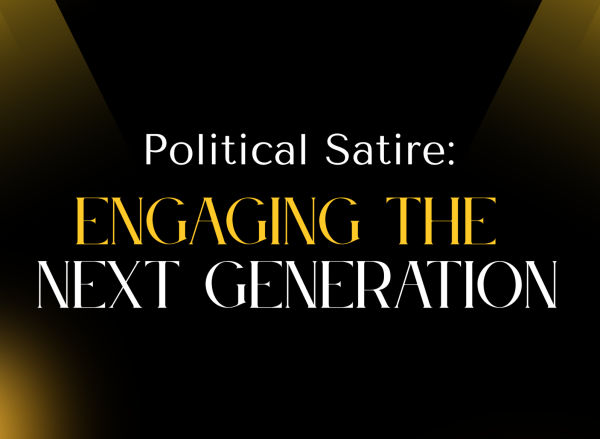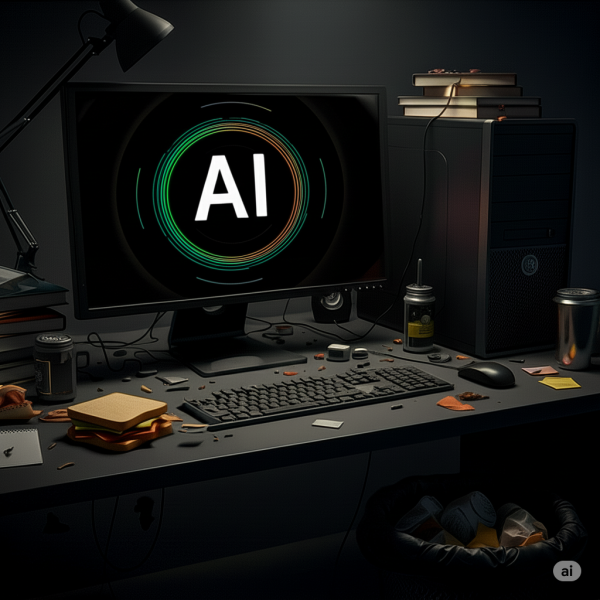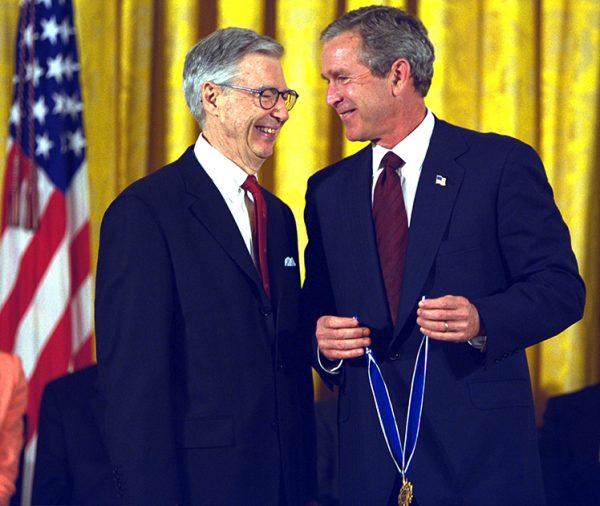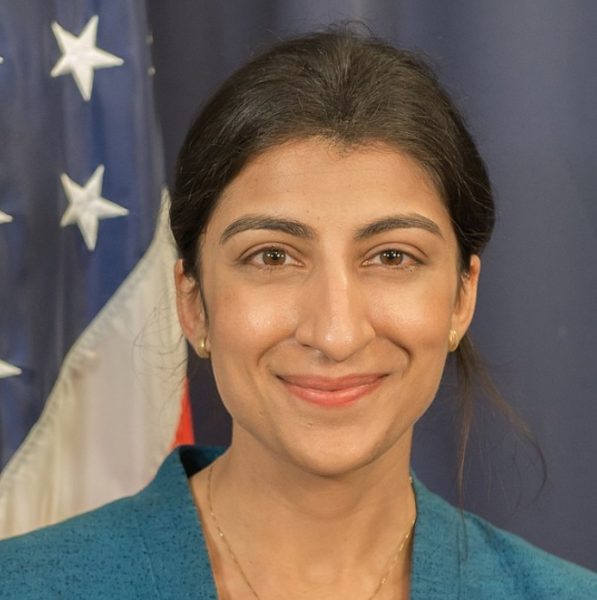An Interview with Professor Jerry Goldman
On March 9, 2022, I sat down with Jerry Goldman, Professor Emeritus of Political Science at Northwestern University. Professor Goldman taught for over forty years, thirty-six of those years at Northwestern University. He is the founder of the Oyez Project, a multimedia archive dedicated to demystifying the Supreme Court of the United States and making legal issues more accessible to everyone.
I talked with Professor Goldman about his career and the Oyez Project. He also shared his thoughts on the current condition of the Supreme Court and what direction it is heading in.
In the history of the Supreme Court, do any of the justices fascinate you the most?
John Marshall was the fourth chief justice, and among scholars, he is regarded as the greatest chief justice. He changed the nature of the Supreme Court the way Babe Ruth changed the nature of baseball. That stands out for me as being a pretty remarkable achievement. However, he wasn’t surrounded by equally astute minds, and he was prepared to do the work of others. That enabled him to be a great leader. He also seemed to be a really charming person. That gave him some social leadership that other justices probably lacked. If you put him at one extreme, you can also think about those at the opposite. I think a really poor leader was Warren Burger because he lacked, in my judgment, the intellectual ability to herd his eight colleagues, and he wasn’t a particularly adept social leader. He is kind of a pompous person, and I don’t think that fits well in an intimate institution like the Supreme Court. He didn’t have a good sense of policy leadership or where to direct the institution.
What inspired you to devote your life to the study of American politics?
In some respects, I fell into it. When I was in college, I thought I would be a philosophy major. While I was reasonably good at philosophy, I wasn’t great. At that point in my life, I didn’t think I could achieve a level of success as a philosopher. I guess I was running out of time when I was in college, and it was easy enough for me to complete a degree in political science. I took to that. What mattered more significantly in my development was a mentor, who was a really fine political scientist. A man named Samuel Jake Konefsky. I was a student in his class, and he asked me to serve as his research assistant. He was a blind constitutional historian, and I was in awe of what he achieved as a person with such a significant handicap. He studied the Supreme Court, and I really took a liking to that area. I liked his lifestyle as a professor, and I thought I could do that. About the time that I was engaged as his research assistant, I was also a public-school teacher. I graduated from college, and I became a science teacher in middle school. I knew I really didn’t want to do that for the rest of my life. With Konefsky’s guidance, I ended up taking a graduate degree at Johns Hopkins, and that set me off on my career.
When the Oyez Project was first launched, how did you spread the word of its existence?
It started in the days before the internet, and it lived on a Macintosh SE. There was no network. I would carry this computer around and show it to people. My colleagues thought I was crazy. I probably was crazy. For a while, I toted it around to professional meetings. A few people would gather around, and they would be in awe of this. It looked like digital index cards. I discovered you could do a lot of things with it that were really creative. You could flip them around, put bitmapped black and white images on them, and you could add video and audio. I used baseball cards as a metaphor, thinking that there are nine justices and nine players on a baseball team. There are teams and justices that exist in courts named after the chief justice, who nominally leads them. I played around with the metaphor that had baseball-style images of the justices. You flipped over to the back of the card and got data on the number of days they served, when they were appointed, and when they stepped down or died. I played with that idea of the baseball card metaphor quite a bit.
It was somewhere in that period that I learned of the existence of these audiotapes at the National Archives. There was a restriction on their use at the time. You could only gain copies through a request of the National Archives, provided you agree that you would only use this for educational purposes. That was alright with me. I didn’t have any grand vision beyond its educational purpose. That’s when I started acquiring some of these materials, and it became much more interesting to my professional colleagues who studied the Supreme Court. They did not know you could listen to a Supreme Court argument.
About that time, the world was changing pretty rapidly when this thing called the internet arose. I realized that there was a way to transform this collection of materials that existed only on a stand-alone computer and bring it to the internet. I got some good press in The New York Times and The Wall Street Journal, and that’s how the word spread.
What challenges did you face when you originally started the Oyez Project?
I had some initial support from the Northwestern Library at the time, and I hired a student at the University of Maryland to make copies of these Supreme Court arguments, which existed on reel-to-reel tape. Then I needed engineering help to build this early version of a website. I had some good fortune and started picking up some grant money initially from the National Science Foundation for equipment, then a much larger grant from the National Endowment for Humanities under a program called Teaching with Technology. That gave me a real boost. Money really helped to get it off the ground, and then there was just more and more money because I expanded the idea of what you could do with this.
What have your students taught you?
They have taught me humility. Maybe I had a more inflated sense of myself, but when you come in contact with people who are smarter than you, and many of my students were, in fact, more intelligent than me, that humbled me. I learned how, as a teacher, to deconstruct a complex problem, break it down into smaller parts, and then play with those parts. In my classes, I always engage with my students. I tried to do that one on one, even if it were a class of 200. I was very interested in knowing what students thought, not what they had memorized. But how they used the information readily at their disposal, either from the materials I asked them to read or from items that I might have passed out in class or displayed on an overhead projector.
It was clear to me from the very beginning of my career at Northwestern that I could see a little further than most of my colleagues on the utility of information technology. That gave me a real advantage. It was also a big obstacle because academic institutions, although the faculties are largely very liberal, are deeply conservative about their work and their professional world, and they don’t like to see it change. I was a change agent, and that became a real struggle for me because I knew that the world was moving in my direction. There was an enormous amount of resistance to that, but I kept doing what I was doing because it was fun.
A famous computer scientist [who] worked at the Xerox Research Park and developed the mouse interface that we use on computers today said, “You can tell the pioneers in this business because they’re the ones with the arrows in their backs.” I felt like a pioneer. I was taking a lot of arrows from many of my professional colleagues because I was pushing the professional world in a direction they didn’t want to go. But that was all part of the process of doing what I was doing.
According to Vox, Senate Democrats represent nearly 42 million more people than Republicans, despite both parties enjoying a tied senate. What impact does the Senate have on the Supreme Court?
I do not think it affects it at all. Again, under the assumption that an appointment is not going to alter the direction of the institution, I think the president can pretty much appoint who he or she wants in this environment. There will always be an opportunity for some senator or senators to grandstand, especially those who may be subject to reelection, and they want to communicate to their constituents that they are solidly representing a particular political philosophy. They may try to make some noise, but we’re talking about men and women who have enormous egos and more than likely want to keep their jobs, so they will try to leverage these opportunities to pitch to their base. But no, I don’t know how we overcome the partisanship of that institution now, and it’s really discouraging when I think about this as a political scientist that our institutions are sclerotic, aged, and creaky. They don’t serve representative democracy well, and that was built into the sauce 230 years ago with the drafting of the Constitution and its subsequent approval. But that’s the hand we’ve been drawn.
In the 117th Congress, House and Senate Democrats introduced legislation that would expand the Supreme Court to thirteen justices. What message do you think they are trying to send with this legislation?
[The Supreme Court] is an institution that is 230 years old, and it does not fit well with the assumptions that were made in its creation in 1787 and then implemented in 1791. The average lifespan of an upper-class person that might serve on the Supreme Court was fifteen years. Now, it’s thirty years. Because of science, nutrition, and the understanding of human biology, we live a whole lot longer. There’s a consequence. People like Amy Coney Barret might serve for fifty years. That’s frightening. I think the idea of term limits makes a lot of sense as long as there is a way to assure that no president is disadvantaged in his or her ability to appoint someone to the Supreme Court. The way some of these proposals work, the justices would serve for a certain period of time, and then there would be a rotation during every presidential term so that the president might get two appointments through his or her term in office. That seems entirely reasonable to me because I think the court has to, in some way, reflect the predominant culture. Someone who’s 80 years old, and I’m approaching 80, has a tough time understanding someone two or three generations younger. I think some reform is essential, but none of it will pass, in part because of the partisan divide. The only way this will happen is if there was some major cataclysm and an enormous turnover of the Senate, such that there would be an overwhelming majority held by one party. It is only the Democrats who are going to change it, not the Republicans.
Is the time of bipartisanship for judicial nominations over?
In this political climate, absolutely. It is especially partisan when an appointment would change the direction of the institution. Judge Jackson’s nomination will not pose a problem, and she will be confirmed because she is not going to alter the institution in any significant way. She will certainly have an impact because she brings a voice and an experience that six or seven of her colleagues lack entirely. That’s a good thing, but it’s going to take a few more departures to have some bearing on that institution. I think it’s set for at least another 20 years on the path that it appears to be on.
Why did President Joe Biden nominate Judge Ketanji Brown Jackson to the United States Supreme Court, rather than Judge J. Michelle Childs or California Supreme Court Justice Leondra Kruger?
She checked off all the boxes. First, she’s black, and she’s a woman. The two most important criteria that [President Biden] articulated. Third, she’s super smart. She went to Harvard Law School, and clerked for Justice Stephen Breyer, so she has a pedigree that’s similar to many of the current justices, but there are some interesting differences. She went to a public high school. There is one Supreme Court justice now who attended a public high school. The person she shall replace, Stephen Breyer. All the others went to either private Catholic parochial schools or elite public high schools. That’s a different experience. She also served as a public defender. She knows a lot about criminal defense. None of the other justices have had that experience, so I think there were good reasons to select her. I’m sure she had enormous support from key members of the Senate. She had already passed since she was appointed as a federal District Judge and then was appointed and served on the U.S. Court of Appeals for the District of Columbia. That means she had to sit through confirmation hearings twice. She has been through the drill, more than a few people have combed her record, so it should be a slam dunk. I can’t understand why anyone would vote against her, but, you know, it is politics.
Do you think McConnell’s difference of opinion between Scalia’s death and RBG’s death affects the credibility of the Supreme Court and Senate?
It certainly demonstrates the hypocrisy of Senator McConnell, but it also reflects on the important political character of the Supreme Court. [While] some scholars, very few I suspect, and more public officials try to defend the Supreme Court as a court above politics, it will 7fool nobody. The Supreme Court is fundamentally a political body, and its politics are filtered through the mechanism of law. Its docket consists of very high-profile cases with enormous political consequences, and then there are ample cases that are much more technical and law-like. Part of its work is largely legal and apolitical, but its most significant work is entirely political. McConnell, I hope, only helps the public realize what a political institution the Supreme Court is. Anybody who thinks it is not, frankly, needs to be educated. That is my job.
Professor Goldman shared some of the unique ways that the Oyez Project has impacted people on a personal level.
On the personal, touching, and emotional side, I have on occasion received correspondence principally emailed out of the blue from someone who would write to me and say, “Thank you for sharing this collection of audio materials. My father’s finest day as a lawyer was arguing in the Supreme Court. He died 30 years ago, and I can now hear his voice.” That was really touching to me.
Professor Goldman discussed how uniquely accessible the Supreme Court is.
The Supreme Court is one of the more unusual buildings in Washington. These important figures actually work in the institution you are walking around [in]. You can not do that in the White House. You can not go to the West Wing. It is almost impossible to walk onto the floor of the Senate while it is in session. You might be able to get up in the gallery, but in the Supreme Court, the clerks, staff, and the justices are all in the environment, and you are maybe one wall away from them.
Professor Goldman shared his experiences meeting some of the justices of the Supreme Court.
I’ve met several of the justices over time, way back when I was a graduate student at John Hopkins. I actually had the privilege of interviewing Earl Warren. That was shortly after he had retired from the Supreme Court. When I went to interview him, I had a briefcase with me, and he said, “I want you to understand that there is to be no recording of this interview.” I assured him that there was no device in my briefcase, and he was quite candid in what he said to me.
Then thanks to many of the students I taught who ended up at the Supreme Court as clerks, I had the privilege of taking my students to meet John Roberts, Sonia Sotomayor, and Ruth Bader Ginsburg. I met but did not have a chance to sit down with Antonin Scalia and Stephen Breyer, but those are good experiences for everybody.
Professor Goldman then discussed how a project of his led to a surprise friendship.
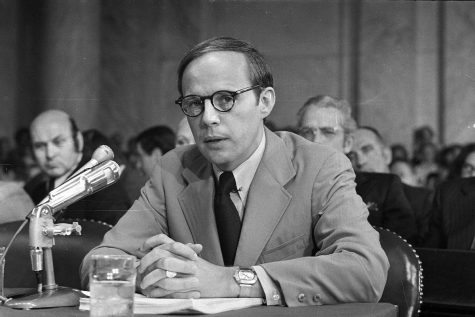 When I went to the National Archives in College Park, where all this audio was stored, I went into the audiovisual section. I thought I had been like Ali Baba and opened this cave of treasures. It was not just the Supreme Court. There were just oodles and oodles and oodles of information. I was just overwhelmed by that. I started collecting audio of events that few people have heard of but were worthy of sharing with a large audience.
When I went to the National Archives in College Park, where all this audio was stored, I went into the audiovisual section. I thought I had been like Ali Baba and opened this cave of treasures. It was not just the Supreme Court. There were just oodles and oodles and oodles of information. I was just overwhelmed by that. I started collecting audio of events that few people have heard of but were worthy of sharing with a large audience.
One of the collections that I included was the prosecution tapes used in the Watergate prosecutions, which sent Haldeman, Ehrlichman, Kleindienst, and maybe even John Dean to jail for the effort to cover up the break-in of the Democratic National Committee headquarters in the Watergate Hotel in 1972 when Richard Nixon was running for reelection.
I posted those tapes of Richard Nixon conspiring in the White House, and the problem with the tapes was that the audio quality was really bad. They had been transcribed because they were used in the prosecution of the defendants and the transcripts were absolutely as accurate as they could possibly be. I figured out in this early stage how to link the audio to the transcript so you could hear the mumbling and then see the transcript and say, “Okay, that sounds about right.” I posted these with some context and background, and I got an email out of the blue from John Dean.
He was the guy during the Watergate special hearings in 1973 who basically reported that he had told Richard Nixon that there was a cancer growing on the presidency as a consequence of this break-in, and you can’t cover it up anymore. Nixon basically tried to put the blame on John Dean. This happened 50 years ago, so I remember it quite vividly, but John Dean was the linchpin in revealing the degree to which Nixon and his cronies aimed to cover up the Watergate break-in that they had sponsored and paid for. John Dean went to prison and now has become a commentator and an author. He is a really smart guy and has an almost perfect memory. When I posted these materials, John wrote to me and said, “You know, I think you got the context of one or two of these tapes wrong.”
We went back and forth, and he conceded that I had gotten it right, and he had misremembered it. As a consequence, we became friends, and it’s been a wonderful experience for me. I was just out in California to visit my family, and I went up to Los Angeles and sat down for lunch with him. It was great to be in his presence 50 years after the Watergate break-in. I was sitting right next to a truly historical figure.
That was one of the little pleasures I got out of messing around with all this audio stuff and educating more than a few students and adults about the Supreme Court, so I feel that I achieved something truly satisfying in my career aside from the thousands of students I taught.

